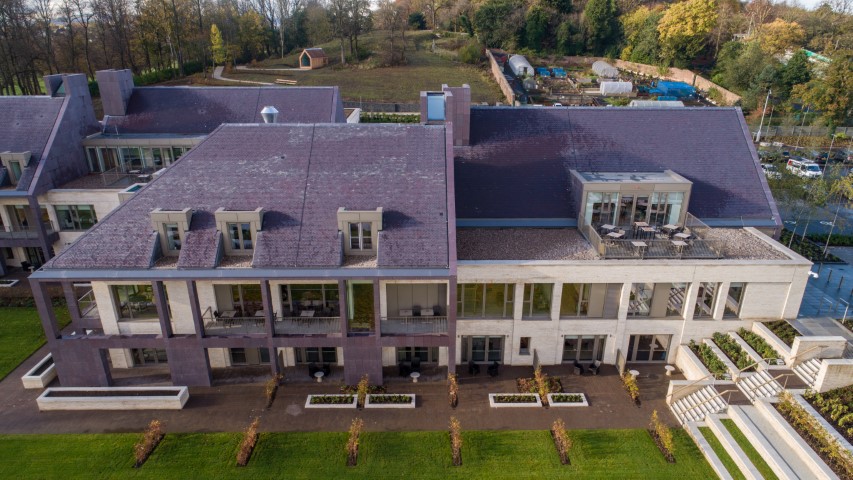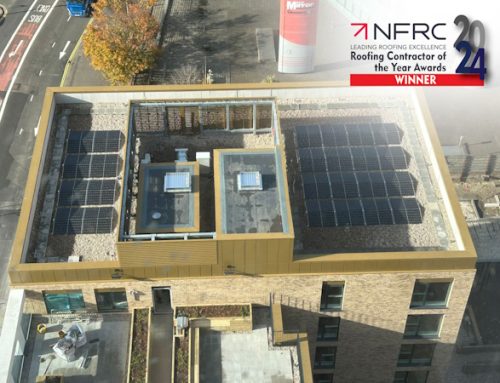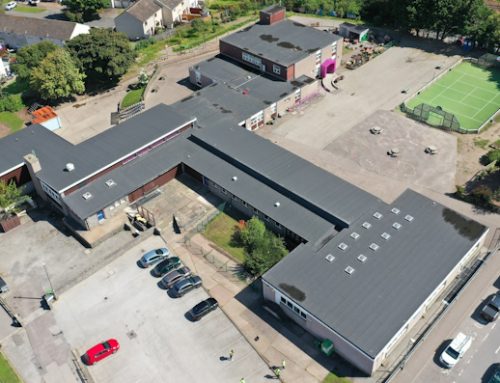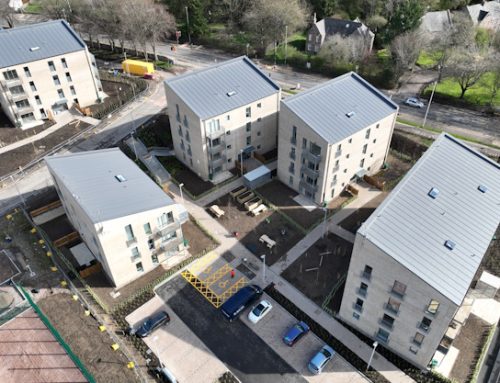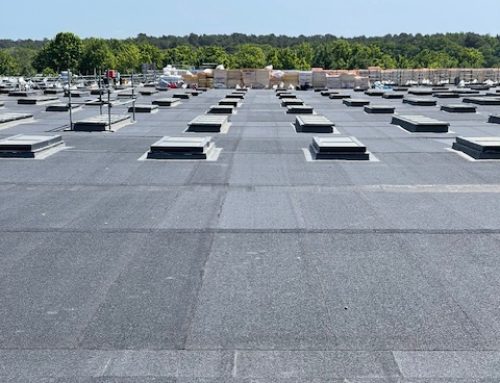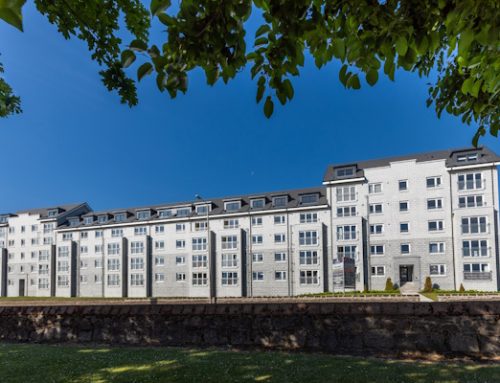Description:
BriggsAmasco was appointed to supply a complex, multi-roof installation at The Prince and Princess of Wales Hospice – a £21m, state-of-the-art palliative care facility, which opened within the leafy, peaceful surroundings of Bellahouston Park, Glasgow in September 2018. The innovative building, an intriguing fusion of art and architecture, and a purpose-built replacement for its former premises which it had ‘outgrown’, provides space for privacy, dignity and compassionate care for patients of all ages and their families.
In terms of complexity, the project surpassed anything the company had previously encountered. This was due to the intricate nature of the roof sectors, which spanned four different levels and presented the programme’s greatest challenge. The roof areas were split into 22 different locations across the site and included roof plant areas, sun terraces, dormers, walkway routes within the main buildings, as well as several outbuildings situated around the hospice’s stunning grounds.
The following systems and materials were installed by BriggsAmasco during the waterproofing project: Bauder Quick dry primer was applied to the concrete roof decks, along with a Bauder EVA35 aluminium-lined elastomeric vapour barrier, Bauder PIR Tapered insulation, BauderTEC Sprint DUO self-adhesive underlayer, and Bauder K4E, 4mm-thick capping sheet with a charcoal-grey finish. For the concrete green roofs, the same products were installed, with Bauder AP2, 4mm-thick root-resistant capping sheet being applied, rather than the Bauder K4E capping. A green slate finish was provided, along with a Bauder Xero Flor XF301 sedum blanket. The plywood deck comprised Bauder SA Bonding Primer; BauderTEC KSD Foli, aluminium-lined self-adhesive vapour barrier; Bauder 120mm PIR FA-TE flat board, aluminium foil-faced insulation, and mechanically-fixed Thermofol U15, 1.5mm-thick polyester reinforced waterproofing membrane (colour: blue-grey).
The waterproofing was installed using the liquid petroleum gas (LPG) method via a hot air gun. The project showcased Briggs’ team’s workmanship on account of the sequencing issues that occurred during the installation stage. It meant the design changed onsite to suit the requirements of various difficult interfaces with other contractor materials. To overcome these issues, ongoing quality inspections were held by Briggs’ supervisors. Regular on-site design meetings with the client and architect ensured the works were delivered to the highest standard.
With regards to health and safety, BriggsAmasco, along with the main contractor Balfour Beatty, worked in conjunction with other on-site trades to ensure the highest standards were maintained without compromise to the works programme. The roofing team had to ensure they were the sole operators in certain areas due to the scope of hot works tasks being carried out. This in turn meant the project handover date remained on track.
As an avid practitioner of environmental project management, BriggsAmasco ensured full dust compression measures were in place during the hospice project, along with designated cutting areas. Any waste materials were recycled or responsibly dealt with. It led to working conditions being kept fully under control for Briggs’ operatives, and all site workers, in accordance with health and safety best-practice guidelines. Indeed, the company’s workmanship and on-site diligence received a testament from Balfour Beatty’s Site Manager, Russell Mair, who said: “Throughout BriggsAmasco’s time on our site it was clear we were working with an industry leader who paid the highest regard to health and safety and equally taking pride in their workmanship was continuous throughout the project programme.”
Due to the various design changes, which led to breaks in continuous availability of works, the project’s waterproofing aspect took 23 weeks to complete. This met the required customer budget. Following completion of the works, Balfour Beatty, its client and BriggsAmasco agreed to utilise drones to capture the beauty of the building and the completed works. This footage was donated by BriggsAmasco to The Prince and Princess of Wales Trust, which uses this as a marketing tool for the hospice.
The Prince and Princess of Wales Hospice took eight years to plan and construct in order to create a place that looked and felt like home and improved the quality of life for its 1,200 patients. This project gave BriggsAmasco the opportunity to leave a legacy in the form of a 21st century palliative care facility; one which is designed to ‘add life to days where it isn’t possible to add days to life’.
Video:
Gallery:
Location:
Glasgow
Approx. Area:
1,750m2
Specification:
XF301 sedum, BauderTEC & Thermofol U15

